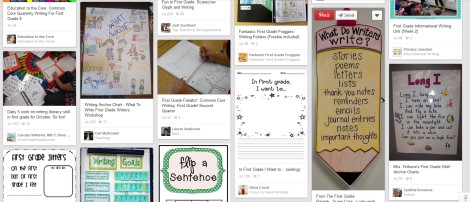This article is part of the 31 Days of Pinterest Hacks series. Find the main page for this series here.
Writing was an art I fell in love with in grade 5. Through weekly journals and the use of a thesaurus, I discovered the beauty of words and how they can be strung together to impact others. Would I ever share this passion with my child?
All children have the potential to read and write. This article takes you through some beginning steps for writing with a neurodivergent or disabled learner.

You can find all the writing tips possible pinned on Pinterest.
A word about writing
The tips in this post go beyond handwriting, although they are somewhat linked. Writing is also related to reading. I’ve chosen to separate each to give concrete tips for each category, but not to dismiss their connection.
In order to write, children typically require handwriting skills, as well as an understanding of the written word. However, just because a child cannot hold a pencil does not mean they cannot write! Writing takes on many forms!
I have put writing ahead of the literacy article since writing is much more concrete and ties in with both handwriting and drawing skills, and makes a great link to reading.
Why writing may be a challenge for neurodivergent and disabled children
- Some children may not comprehend that print contains a message.
- Tracking print while writing may be a challenge for some children.
- Children with learning disabilities may have trouble identifying and producing letters and words.
Suggestions for adaptations/modifications for writing
- Model. My son has always witnessed me writing with paper and pen. Recently, I’ve been sitting closer to him while I write. Since he’s experimenting with different writing/drawing/painting tools, he’s intrigued by the pen wobbling up and down and gliding across the paper. He often comes close and tries to grab the pen but also observes. He’s noticing that I’m producing something with that pen. He sees scribbles on a page, looks at me, looks back at the scribbles and the wobbling pen, and giggles. When I stop, he signs MORE. I will say, “Mama’s writing. Writing.” I might say exactly what I’m writing too, “Apple, banana, cereal,” (if putting together a grocery list). This seemingly simple act is meaningful to him. Eventually, he’ll want to imitate what I’m doing. I often hand him the pen to see what he’ll do. He mostly lets it go and asks for me to do it instead by signing MORE.
- Read. Show the child that the symbols on the page mean something. Point to words as you read. “The train said, ‘Choo-choo’. It says ‘Choo-choo’.” It doesn’t matter that they may not read yet. The goal is to make the connection that those black marks hold meaning.
- Begin where the child is at. Are they developmentally ready to write? If not, back it up. Can they draw? Can they scribble? Can they tell you, sign, or use AAC to communicate? Even if it’s just single words, have the child “write” in their own way. Build vocabulary through ASL or on their AAC device. If the child can “speak” or can scribble a line and tell you what it represents, you’ve got yourself a writer!
- Transcribe. Be the child’s writer when they can’t do it for themselves. If the child says, “Bird,” draw the bird and then write the word. “Ah, bird. Look. Bird. Bird.” You can pin it up somewhere central and go back to it occasionally. “It says, ‘Bird.”
- Start a journal. Bind up some blank paper and call it a journal. Don’t limit a child with lines because this isn’t about handwriting skill-building. Encourage the child to make meaningful communication with you through “writing.” If the child can already draw or scribble, allow them to write in their journal daily. Transcribe what they wrote by asking for what it says.
- Use technology. If needed, use technology for writing. Ask the child’s SLP to help you and the child set up a plan. I touch on technology in a future article in this series.
- Keep it light, enjoyable, and authentic. Never take away the delight in writing by harping on spelling mistakes when a child first explores writing. You want them to feel successful! Celebrate the littlest scribbles. And always connect the writing to things that are meaningful for the child. If the child wants to write about cars by drawing about cars, then HURRAY!
- Allow time. No matter what stage of writing a child is at, always give allow for the time they need to develop the skill.
What works best for writing for the children you support?
This article only briefly touches on the art of writing. The recommendations would differ greatly depending on the child’s needs and developmental level. If you’d like personalized strategies, let’s do that in a private call.

0 Comments